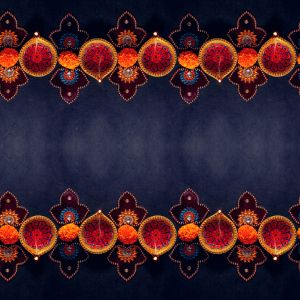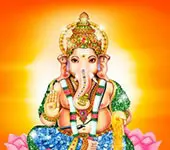Understanding Adhyāsa: A Closer Look at False Attribution

Understanding Adhyāsa: A Closer Look at False Attribution
In the realm of Advaita Vedanta, there exists a profound concept known as Adhyāsa, often described as the imposition of one cognition onto another. This intricate idea encompasses the notion of false attribution, where properties of one entity are mistakenly ascribed to another. In simpler terms, it involves mistaking one thing for another, driven by ignorance or error.
Unraveling Adhyāsa and Adhyāropa
In the context of Advaita Vedanta, two key terms, Adhyāsa and Adhyāropa, play a crucial role in explaining the singular reality of Brahman, devoid of any multiplicity or diversity in the perceived objects of experience. Adhyāropa, akin to Adhyāsa, signifies the act of falsely attributing characteristics due to ignorance or mistake. An illustrative example of this is the classic scenario of misidentifying a rope as a snake in the darkness.
The core philosophy asserts that, in reality, the objects we perceive lack tangible existence; they are mere appearances superimposed on the fundamental reality of Brahman. This superimposition is facilitated by the veil of mayā, often referred to as ignorance.
The Illusory Nature: Vivarta and Its Significance
Another term integral to understanding this philosophical framework is Vivarta denoting an illusory form or unreal appearance resulting from a lack of proper comprehension. It represents a scenario where the genuine existent is not correctly perceived, leading to the presentation of an unreal, imaginary, or illusory object by our senses.
Drawing a parallel, the snake being perceived in place of a rope is a vivid illustration of Vivarta. Likewise, in the worldview of Advaita Vedanta, the entire world of objects of experience is considered a Vivarta of Brahman. In this perspective, Brahman is the ultimate reality underlying the diverse array of perceived objects. This doctrine, often referred to as adhyāsavāda, adhyāropavāda, or vivartavāda, asserts that only Brahman holds true reality, while everything else is illusory.
Challenging Perspectives: Vedantins vs. Other Schools
The profound idealism embedded in the Vedanta perspective on the nature of basic reality faces opposition from various other schools of Indian philosophy. While Adi Sankara, a prominent figure in Advaita Vedanta, supports the concept of Adhyāsa, his views on the existence of dream-objects provide a nuanced perspective. According to him, dream-objects possess a certain level of existence, termed prātibhāsika satta, during the dream state.
Similarly, in daily life, the perceived world carries a form of existence known as vyāvahārika satta. However, with the attainment of ātmajñāna, or knowledge of the self, this worldly existence comes to an end, giving rise to pāramārthika satta, the transcendental existence. In this state, the sole reality of Brahman is fully comprehended, and there is a complete negation of adhyāsa, adhyāropa, or vivarta.
Realities Unveiled: The Three States of Existence
Adi Sankara's commentary on Upanishads and Brahmasutras delves into the notion of three distinct states of existence. The dream state, characterized by prātibhāsika satta, implies that dream-objects possess some form of existence while the dream continues. In the waking state, vyāvahārika satta represents the existence attributed to the perceived world in our daily lives.
However, the pinnacle of understanding comes with the transcendental state, pāramārthika satta, attained through knowledge of the self. In this state, the inherent reality of Brahman is fully grasped, and there is an unequivocal dismissal of adhyāsa, adhyāropa, or vivarta.
Illuminating the Path to Transcendence
To comprehend the intricacies of Adhyāsa and its counterparts, it is essential to explore the philosophical underpinnings of Advaita Vedanta. The doctrine of adhyāsavāda underscores the illusionary nature of the world, asserting that only Brahman constitutes true reality. This perspective challenges alternative viewpoints within the rich tapestry of Indian philosophy.
Advaita Vedanta in Contrast to Other Philosophies
The idealistic stance of Advaita Vedanta, declaring Brahman as the sole reality, encounters opposition from other schools of thought. Schools that perceive the world as having inherent reality, in contrast to the illusionary nature proposed by Advaita Vedanta, engage in philosophical debates.
A Comparative Analysis of Perspectives
To illustrate the contrasting views, let's consider the Nyaya school, which emphasizes the reality of the world and objects. According to Nyaya, the perceived world possesses a true and objective existence, not merely an illusory appearance. This stands in stark contrast to the Advaita Vedanta perspective, where the world is deemed a mere superimposition on the ultimate reality of Brahman.
Similarly, the Sankhya school, with its dualistic framework, posits the independent existence of both Purusha (consciousness) and Prakriti (nature). In this paradigm, the diversity of the world is inherent and not considered a mere illusion. Advaita Vedanta, in its resolute idealism, challenges these viewpoints by asserting that everything, except Brahman, is illusory.
Historical and Philosophical Context
To delve deeper into the roots of these philosophical differences, it is crucial to examine the historical and cultural context in which these schools of thought emerged. The ancient Indian philosophical landscape was a melting pot of diverse ideas, each seeking to unravel the mysteries of existence.
Advaita Vedanta: A Historical Overview
Advaita Vedanta, attributed to Adi Sankara in the 8th century CE, emerged as a prominent school of thought within the broader Vedanta tradition. Vedanta, meaning the end of the Vedas, encompasses various philosophical perspectives seeking to interpret the essence of Vedic teachings.
Adi Sankara's Advaita Vedanta stood out for its radical idealism, propounding that Brahman alone is real, and everything else is a mere illusion. This departure from conventional schools marked a significant shift in the philosophical landscape.
Nyaya and Sankhya: Alternative Philosophical Trajectories
Nyaya, one of the six orthodox schools of Hindu philosophy, traces its origins to the Nyaya Sutras attributed to Gautama. It emphasizes logic and epistemology, aiming to establish the true nature of reality through valid means of knowledge.
Sankhya, on the other hand, attributed to Sage Kapila, presents a dualistic worldview, distinguishing between the eternal consciousness (Purusha) and the ever-changing nature (Prakriti). This dualism forms the basis for understanding the diversity and complexity of the world.
Unveiling the Veil of Maya
The concept of mayā plays a pivotal role in understanding Adhyāsa within Advaita Vedanta. Maya is often described as a veil of ignorance that shrouds the true nature of reality. It is through this veil that the illusory world is superimposed on the undifferentiated reality of Brahman.
The Illusory Dance of Maya
Analogous to a theatrical performance where illusions captivate the audience, mayā orchestrates the grand spectacle of the perceived world. The illusions, or superimpositions, arise from ignorance, veiling the ultimate reality of Brahman. This metaphorical dance of mayā serves as a powerful allegory for the illusory nature of the world.
Practical Implications: Liberation through Knowledge
The philosophical discourse on Adhyāsa extends beyond theoretical considerations to practical implications for individuals seeking liberation (moksha) from the cycle of birth and death (samsara). In the Advaita Vedanta tradition, liberation is not attained through ritualistic practices or mere intellectual understanding but through direct knowledge of one's true self.
The Role of Self-Knowledge in Liberation
According to Advaita Vedanta, the culmination of self-knowledge leads to liberation. The realization that one's essential nature is identical to Brahman dismantles the illusions created by adhyāsa, adhyāropa, or vivarta. This transformative knowledge brings an end to the cycle of ignorance and births, paving the way for ultimate liberation.
Scriptural References: Foundations of Advaita Vedanta
The philosophical tenets of Advaita Vedanta find support in sacred Hindu scriptures, particularly the Upanishads. Adi Sankara's commentaries on the Upanishads and Brahmasutras serve as foundational texts elucidating the intricacies of Advaita philosophy.
Upanishads: Insights into Ultimate Reality
The Upanishads, considered the culmination of Vedic wisdom, delve into the nature of reality, consciousness, and the self. Through profound dialogues and revelations, these texts provide the basis for Advaita Vedanta's assertion that Brahman is the ultimate reality, and everything else is an illusion.
Brahmasutras: Systematic Exploration of Vedanta
The Brahmasutras, attributed to Sage Vyasa, serve as systematic aphorisms exploring the essence of Vedanta. Adi Sankara's commentaries on the Brahmasutras meticulously unravel the philosophical intricacies, establishing the foundations of Advaita Vedanta.
Conclusion: Navigating the Illusory Labyrinth
In the labyrinth of philosophical inquiries, Adhyāsa stands as a profound concept within the tapestry of Advaita Vedanta. It beckons individuals to question the nature of reality, inviting them to unravel the illusions woven by ignorance.
As we traverse the intricate web of Adhyāsa, Adhyāropa, and Vivarta, we encounter a paradigm that challenges conventional perceptions of the world. The veil of mayā, the dance of illusions, and the ultimate reality of Brahman form the backdrop against which this philosophical drama unfolds.
In the pursuit of understanding, we navigate through the contrasting perspectives of Advaita Vedanta, Nyaya, and Sankhya, each contributing to the diverse mosaic of Indian philosophy. The historical context reveals the dynamic interplay of ideas that shaped these philosophical trajectories.
Ultimately, the practical implications of Adhyāsa lead us to the path of liberation, emphasizing the transformative power of self-knowledge. As we draw from scriptural references and delve into the foundational texts of Upanishads and Brahmasutras, we glean insights into the profound wisdom embedded in Advaita Vedanta.
In conclusion, Adhyāsa invites us to embark on a philosophical journey, challenging our perceptions, unraveling illusions, and ultimately pointing towards the timeless truth encapsulated in the concept of Brahman – the ultimate reality beyond the veil of mayā.
What is Adhyāsa in Advaita Vedanta?
Adhyāsa refers to the imposition of one cognition onto another, specifically the false attribution of properties due to ignorance or mistake. In the context of Advaita Vedanta, it explores the illusory nature of perceived objects and the ultimate reality of Brahman.
How does Adhyāsa relate to Liberation (Moksha)?
Adhyāsa holds practical implications for seekers of liberation in Advaita Vedanta. Liberation is not achieved through rituals but through direct self-knowledge. Understanding the illusory nature of the world dismantles the cycle of ignorance and births, paving the way for ultimate liberation.
Quiz
In Advaita Vedanta, what does Adhyāsa primarily refer to?Recommended for you
Mantra for blessings of Ganesha, Durga, Kshetrapala, Vastu Purusha, Rudra, Indra, Mrityu and Agni

vaastoshpate shagmayaa shamsadaa te saksheemahi ranvayaa gaatumatyaa. aa vah' kshema uta yoge varanno yooyam paata svastibhih' sadaa nah'......
Click here to know more..Mrigashira Nakshatra Famous Personalities

Dr. Rajendra Prasad - Indian President - Political power. Dr. B.V.Raman - Astrologer, Author - Intelligent, writing skills.....
Click here to know more..Vakratunda Stava

namastubhyam ganeshaaya brahmavidyaapradaayine. yasyaagastyaayate naama vighnasaagarashoshane. namaste vakratund'aaya trinetram dadhate namah'. chatur....
Click here to know more..
English Topics
Rare Topics
Click on any topic to open
- 237 The Practice of Bhojana Sadhana
- 236 Words of Wisdom - 2
- 235 Defining Goodness - Sanatana Dharma's Perspective
- 234 Vibhishana in Ramayana - A Tale of Morality, Loyalty, and Redemption
- 233 God will not let you break
- 232 A Glimpse into the 64 Arts
- 231 Chembai Vaidyanatha Bhagavatar - A Carnatic Maestro's Musical Odyssey
- 230 Understanding Adhyāsa: A Closer Look at False Attribution
- 229 Is Family's Permission Necessary For Becoming Sanyasi ?
- 228 Faith In Upasana
Please wait while the audio list loads..
30
Ganapathy
Shiva
Hanuman
Devi
Vishnu Sahasranama
Mahabharatam
Practical Wisdom
Yoga Vasishta
Vedas
Rituals
Rare Topics
Devi Mahatmyam
Glory of Venkatesha
Shani Mahatmya
Story of Sri Yantra
Rudram Explained
Atharva Sheersha
Sri Suktam
Kathopanishad
Ramayana
Mystique
Mantra Shastra
Bharat Matha
Bhagavatam
Astrology
Temples
Spiritual books
Purana Stories
Festivals
Sages and Saints
